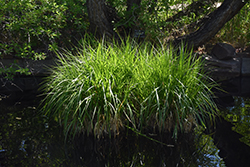It's all about ...
plants

Height: 3 feet
Spread: 24 inches
Sunlight:
![]()
![]()
![]()
Hardiness Zone: 4a
Other Names: Bottlebrush Sedge
Description:
A fine-leaved variety that thrives in wet soil and full sun; tolerates temporary flooding; interesting, bright green bristly seed heads appear in summer among the foliage; actively grows in cooler temperatures; an excellent stream edge or pondside plant
Ornamental Features
Porcupine Sedge is primarily grown for its highly ornamental fruit. The light green seed heads are carried on showy spikes which fade to buttery yellow over time, which are displayed in abundance from mid summer to early fall. Its attractive grassy leaves remain bluish-green in colour throughout the season.
Landscape Attributes
Porcupine Sedge is a dense herbaceous perennial grass with a mounded form. It brings an extremely fine and delicate texture to the garden composition and should be used to full effect.
This is a relatively low maintenance plant, and is best cleaned up in early spring before it resumes active growth for the season. It is a good choice for attracting bees and butterflies to your yard. Gardeners should be aware of the following characteristic(s) that may warrant special consideration;
- Suckering
Porcupine Sedge is recommended for the following landscape applications;
- Mass Planting
- Border Edging
- General Garden Use
- Groundcover
- Naturalizing And Woodland Gardens
- Bog Gardens
Planting & Growing
Porcupine Sedge will grow to be about 3 feet tall at maturity, with a spread of 24 inches. Its foliage tends to remain dense right to the ground, not requiring facer plants in front. It grows at a slow rate, and under ideal conditions can be expected to live for approximately 10 years. As an herbaceous perennial, this plant will usually die back to the crown each winter, and will regrow from the base each spring. Be careful not to disturb the crown in late winter when it may not be readily seen!
This plant performs well in both full sun and full shade. It prefers to grow in moist to wet soil, and will even tolerate some standing water. This plant should not require much in the way of fertilizing once established, although it may appreciate a shot of general-purpose fertilizer from time to time early in the growing season. It is not particular as to soil type or pH. It is somewhat tolerant of urban pollution. Consider applying a thick mulch around the root zone in both summer and winter to conserve soil moisture and protect it in exposed locations or colder microclimates. This species is native to parts of North America. It can be propagated by division.
This plant is not reliably hardy in our region, and certain restrictions may apply; contact the store for more information.
